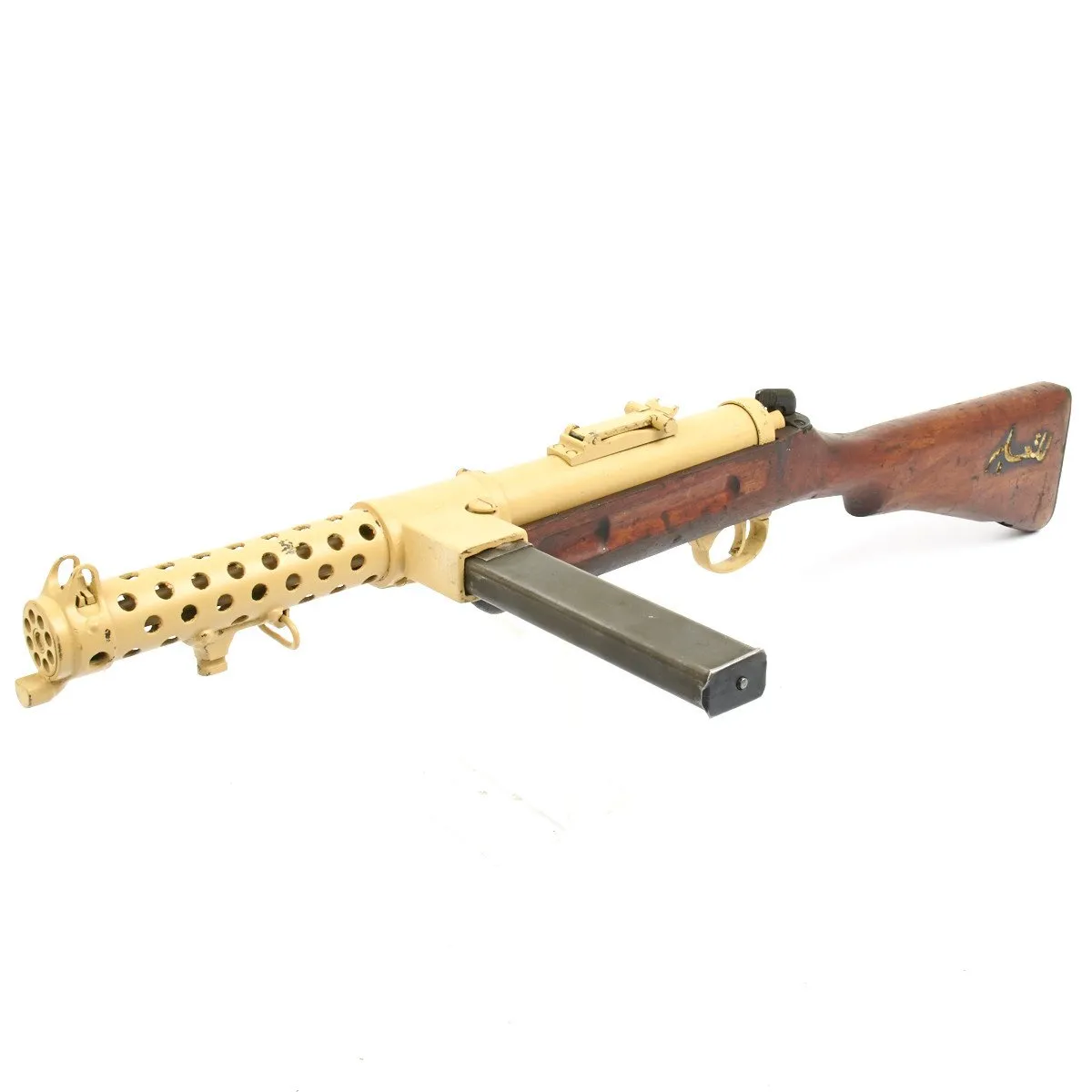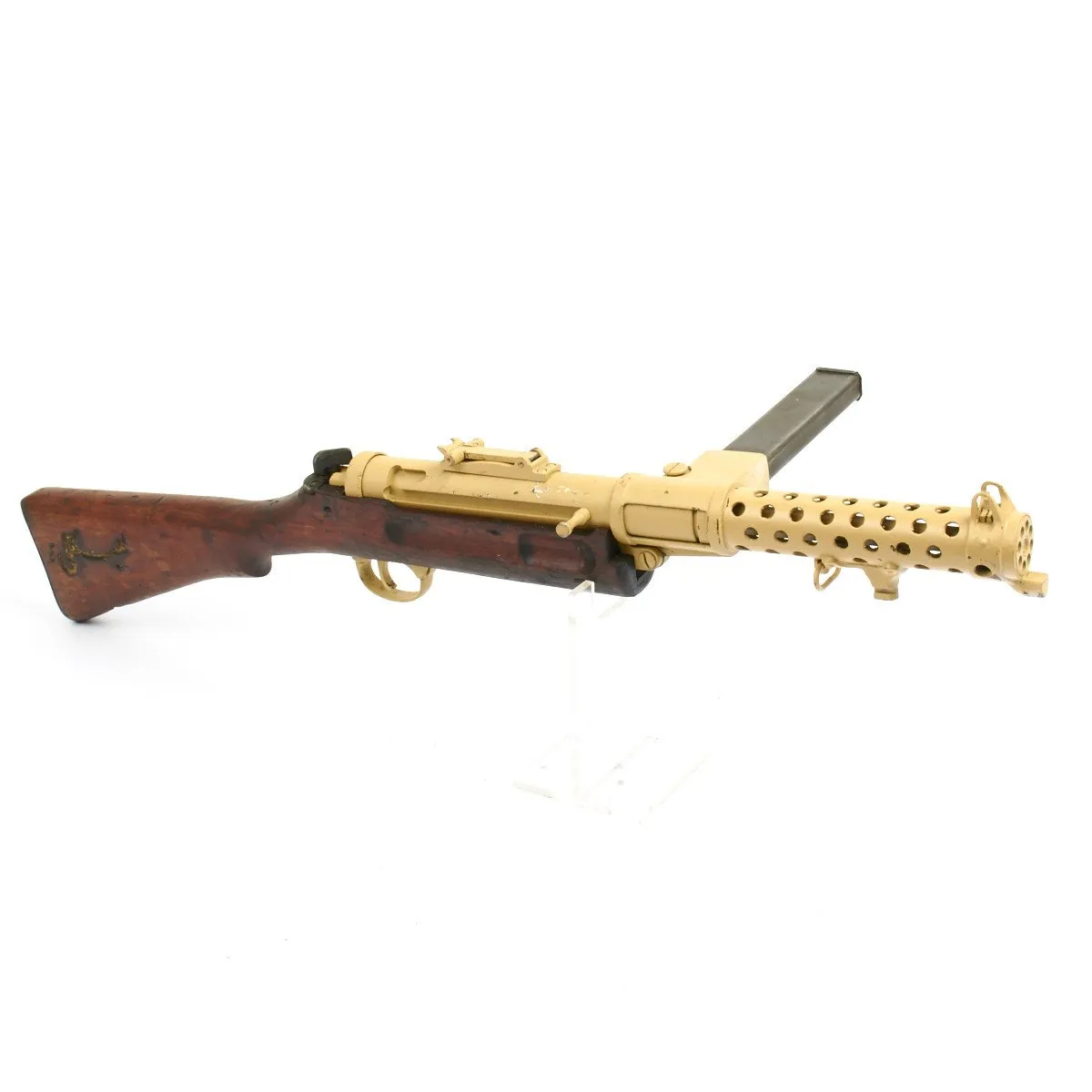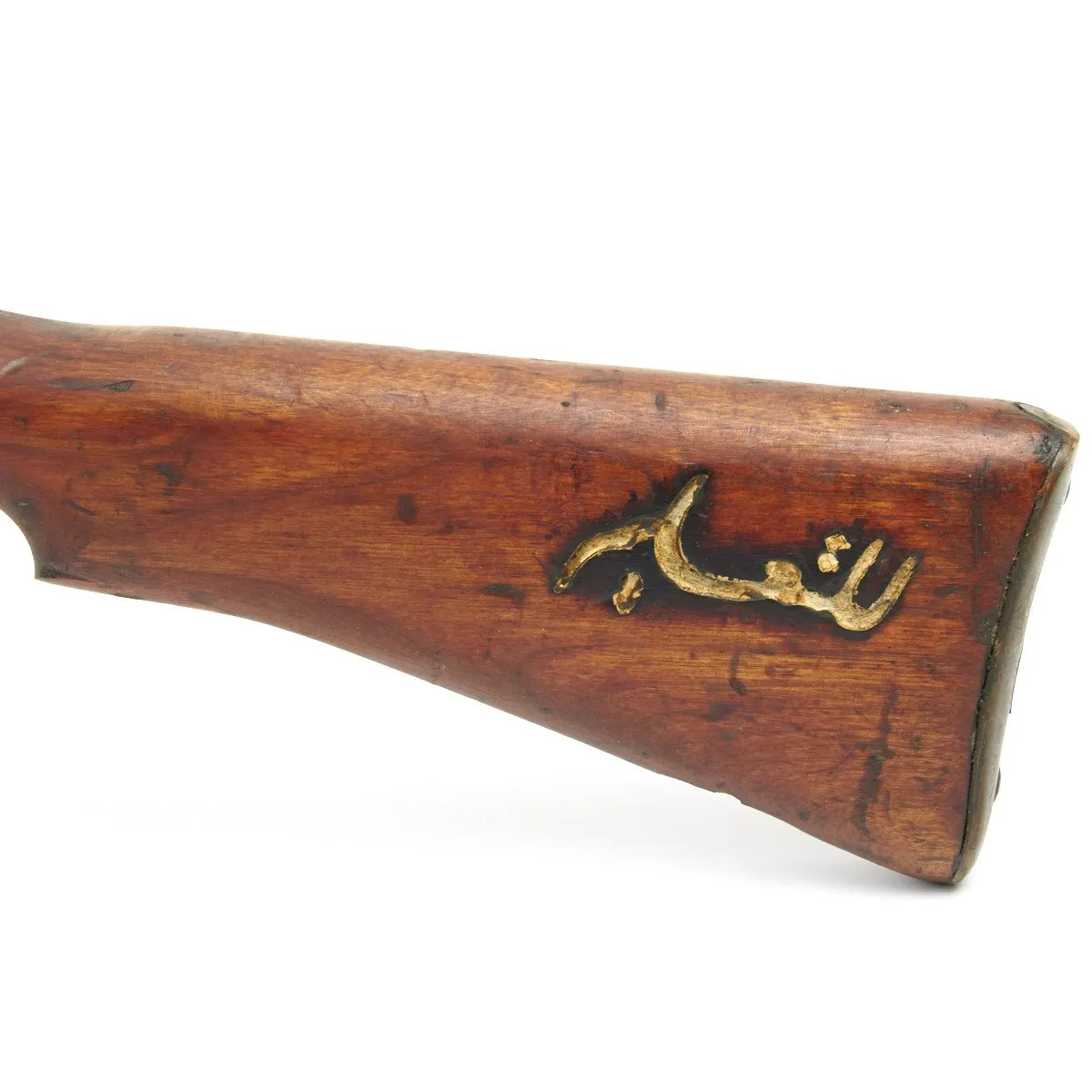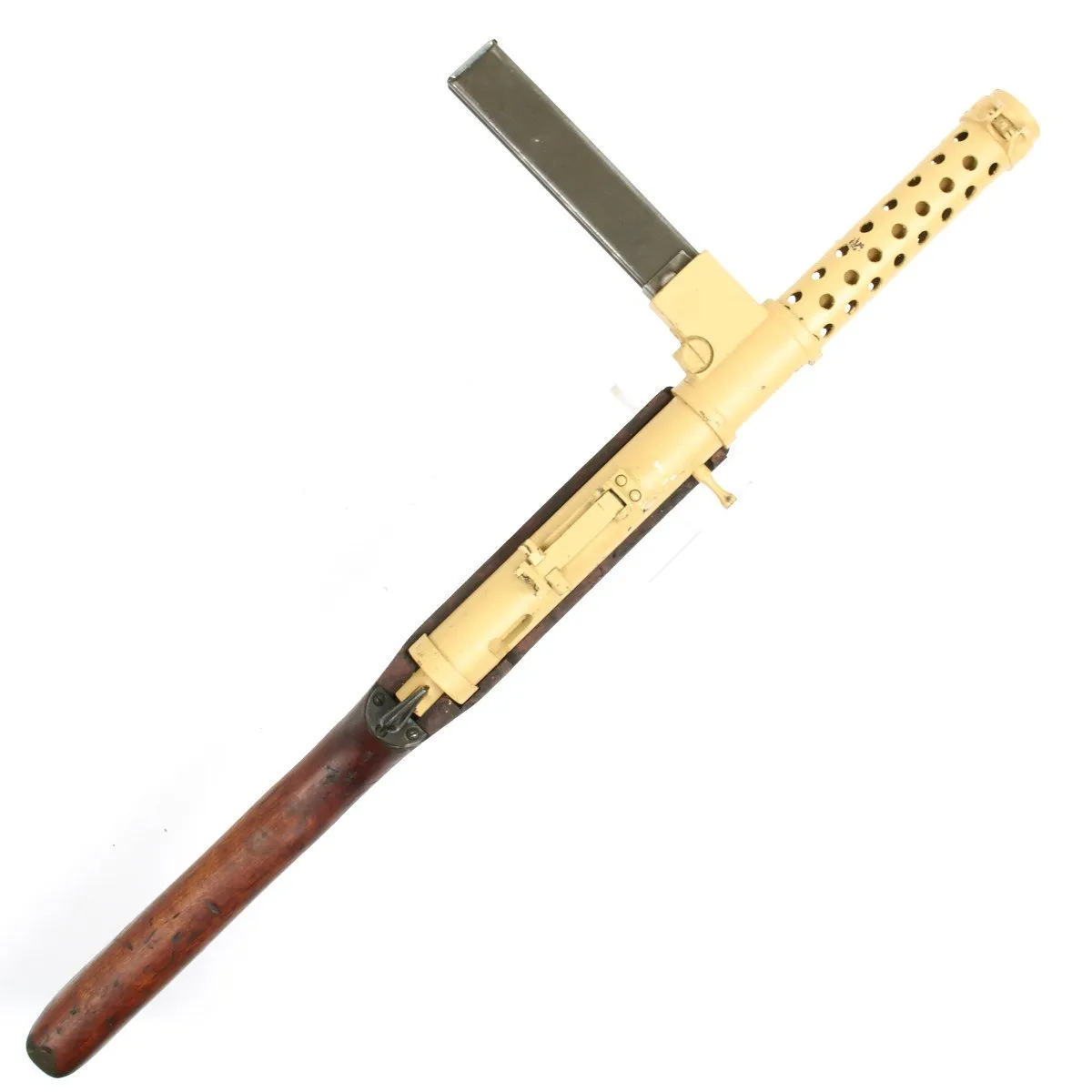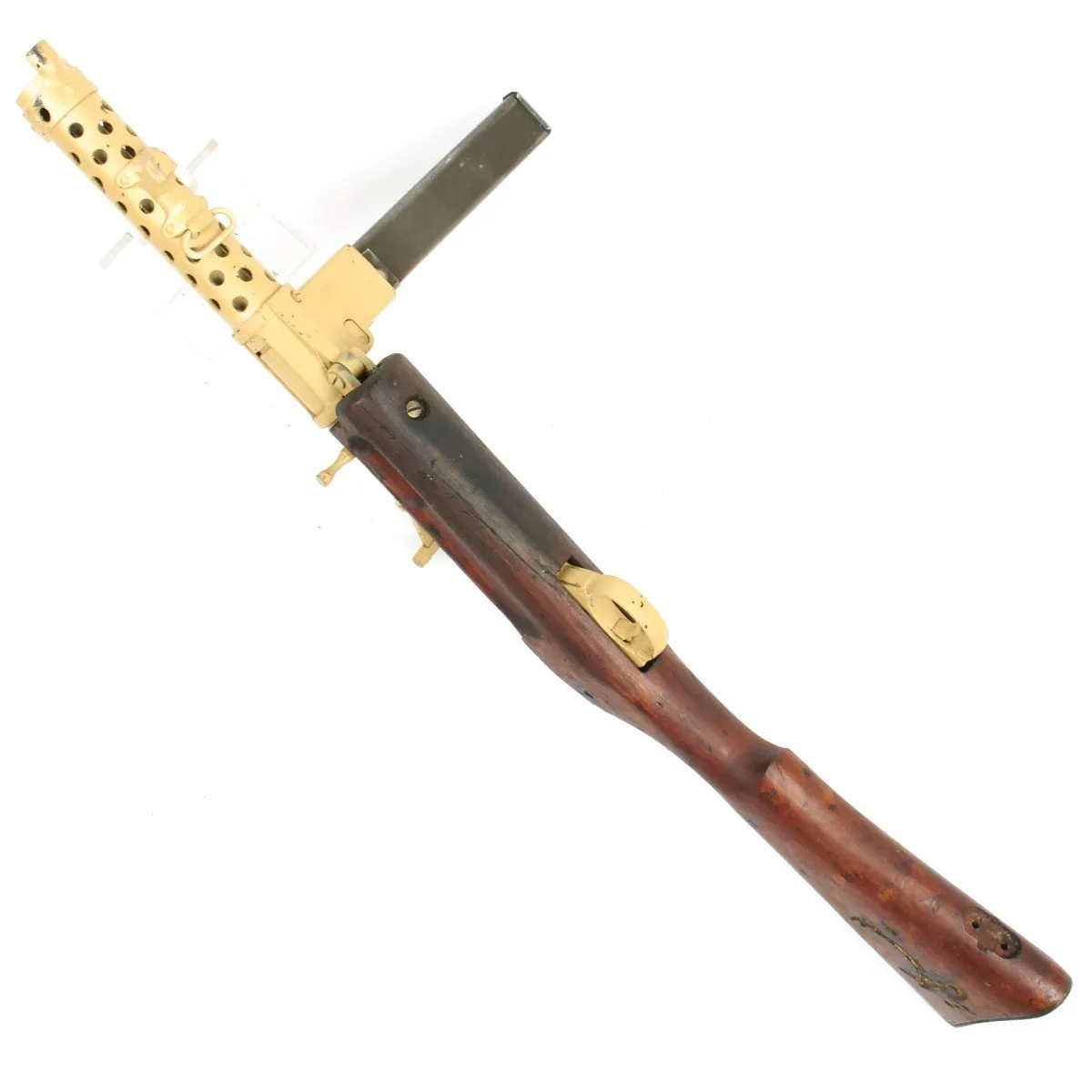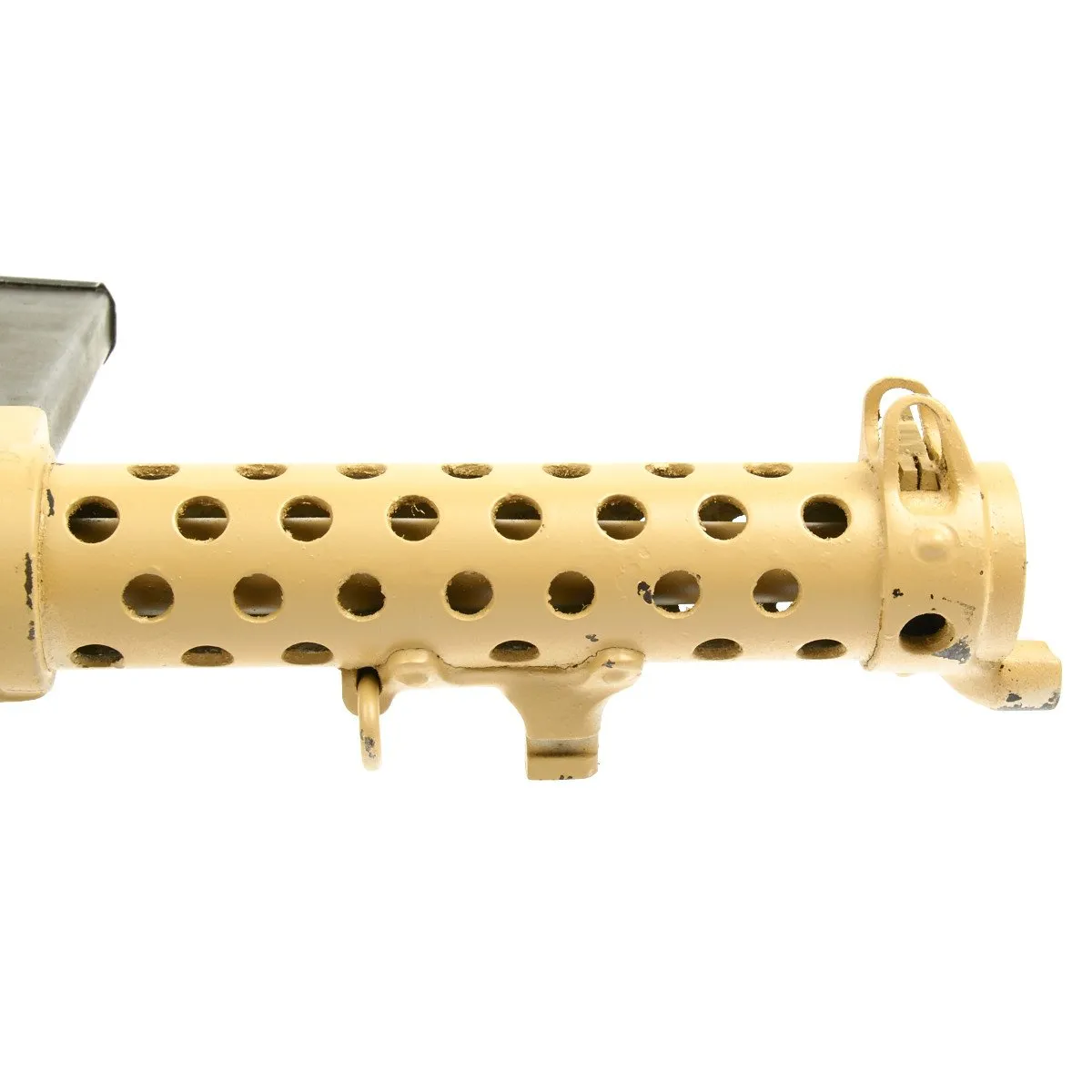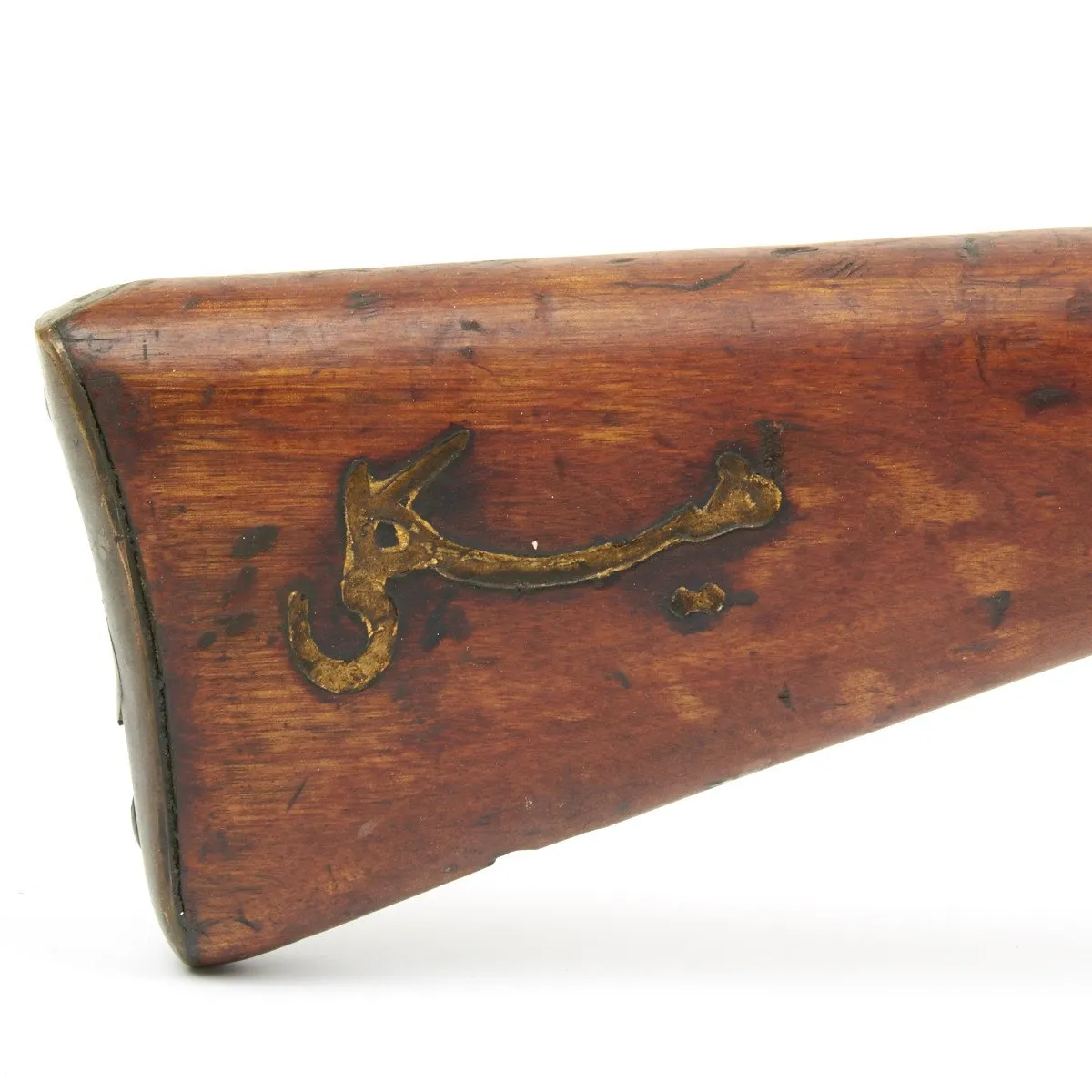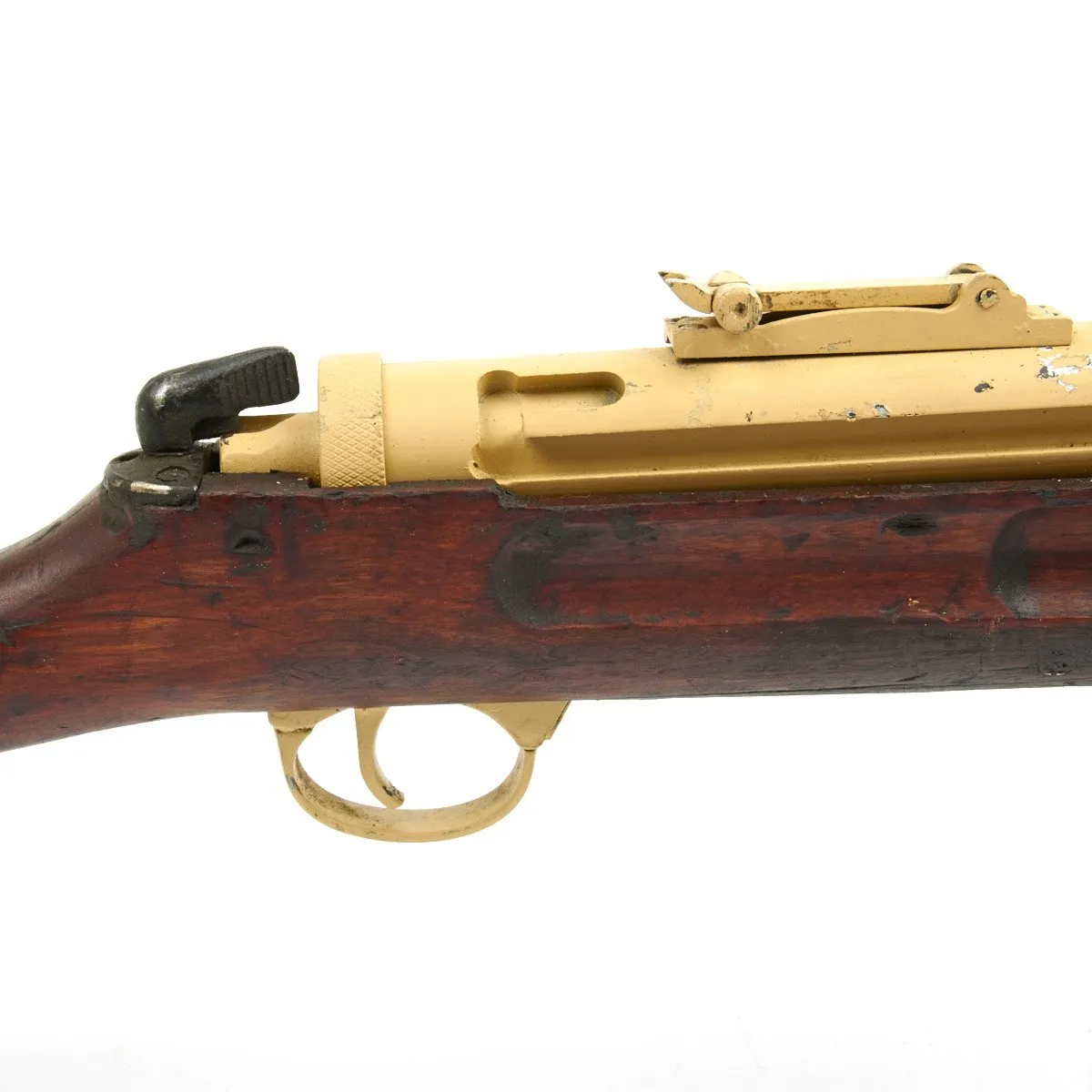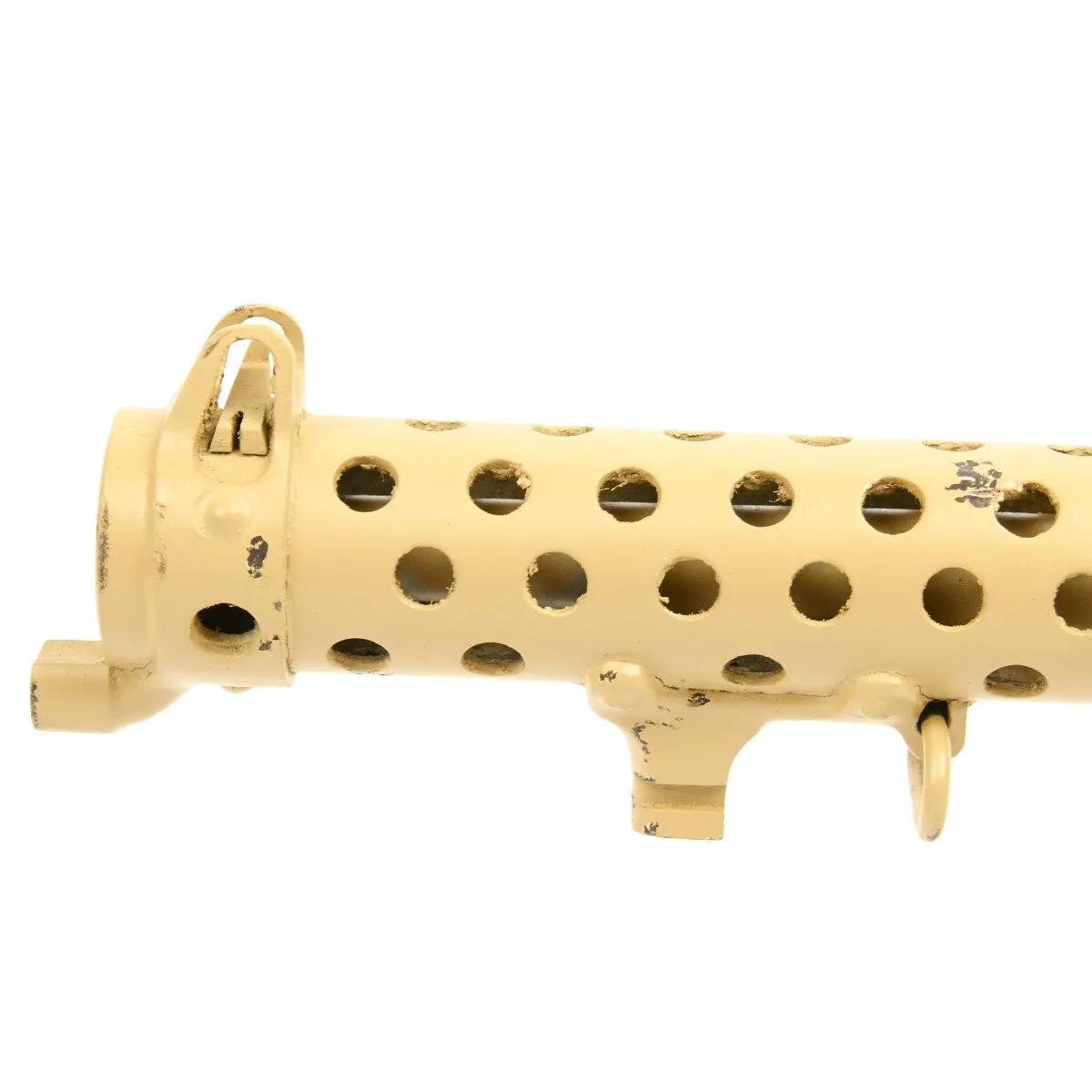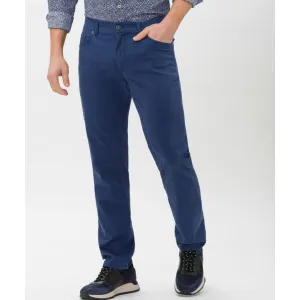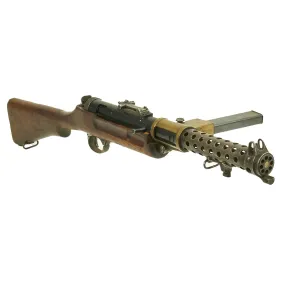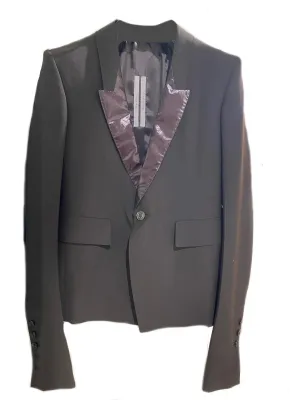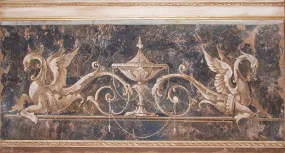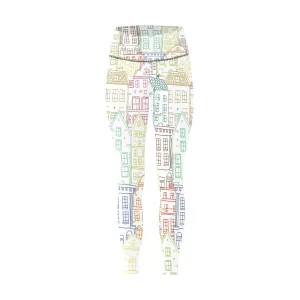Original Item: We all remember Rommel's Afrika Korps the elite Germany army that swept the British east across North Africa all the way to the gates of Cairo in Egypt. Well you probably also recall how the British General Montgomery and his 8th Army, the "Desert Rats" included then defeated Rommel at the Battle of El Alemain and then drove the Afrika Korps out of North Africa.
Well the 8th Army weren't just Brits, meaning from the Empire as well, but also, our then "local" allies, "The Arab Legion". Originally formed in WW1 to oust the Turks of the Ottoman Empire these multitude of Arab Troops including "the Trans Jordan Frontier Force" were eager to expel the German invaders as much as the British. So using British equipment they played a significant role in the final Campaign that routed the German invasion.
IMA is able to offer a limited number of Original Lanchester Sub Machine Guns that have been rebuilt to BATF specifications to INERT DISPLAY GUNS for Collecting purposes but these select guns were actually issued to the Arab Legion for this great push.
Each gun has Arabic inscriptions machine cut into the buttstock which are properly machined inscribed and not the work of a bored Bedouin. So these Guns were really there and can tell a tale or two. Barrel jackets bearing sand colored paint, as they would have in the El Alemain Campaign. Who remembers "Lawrence of Arabia"? Wrong war, but you get the idea! So Officially issued Arab Legion WW2 Lanchester SMG, first time ever offered.
British WWII Lanchester Display Sun Machine Gun. One of the best quality British SMGs of WWII, the Lanchester has a full wood buttstock with brass butt plate. A heavy bronze magazine housing and ventilated barrel jacket complete with bayonet stands. (Takes Enfield 1907, 1943/44 series bayonets, advertised separately.) Built of solid aluminum dummy receiver each comes complete with original 32 round magazine (where permitted). A terrific display item.
The Lanchester is a submachine gun (SMG) manufactured by the Sterling Armaments Company between 1941 and 1945. It is a copy of the German MP28/II and was manufactured in two versions, Mk.1 and Mk.1*; the latter was a simplified version of the original Mk.1, with no fire selector and simplified sights. It was primarily used by the British Royal Navy during the Second World War, and to a lesser extent by Royal Air Force regiments (for airfield protection).
Following the Dunkirk evacuation in 1940, the Royal Air Force decided it required a submachine gun for airfield defence. With no time available for the usual research and development of a new weapon, it was decided to create a direct copy of the German MP 28. The British Admiralty decided to join with the RAF in adopting the new weapon, and played a key role in its design. Ultimately, it was within the Royal Navy that most of Lanchesters produced went into service.
The British copy of the MP28 was given the general designation of Lanchester after George Herbert Lanchester who was charged with producing the weapon at the Sterling Armaments Company, the same company that produced the Sterling submachine gun.
The Lanchester was envisioned as a weapon used for guarding prisoners and accompanying naval landing and assault parties. It was a very solid, well-made submachine gun of high quality materials, in many ways the complete opposite of its direct contemporary, the Sten.
The Lanchester had a heavy wooden butt and stock, a machined steel action and breech block, a magazine housing made from solid brass and a mounting on the muzzle for use of a long bladed 1907 bayonet. The rifling differed from the German original in details to accommodate various lots of 9mm ammunition then being acquired for service use. The Lanchester also reused furniture from the Lee-Enfield.
Produced in two versions, Mk.1 and Mk.1*. The Mk.1* was a simplified version of the original Mk.1, which omitted the fire mode selector (full automatic only) and used simplified sights.
Magazine included where permitted, otherwise spring and follower removed.




